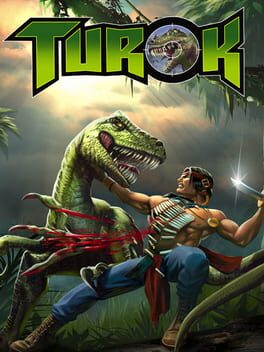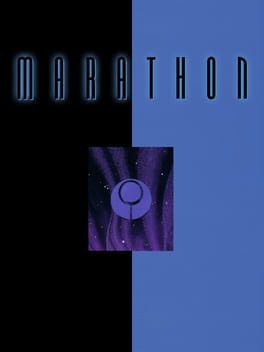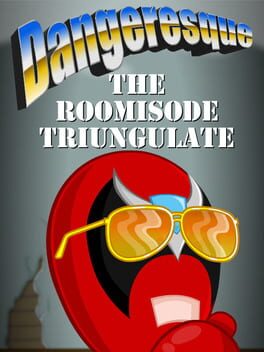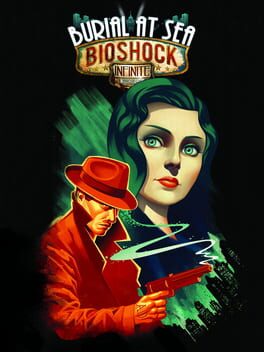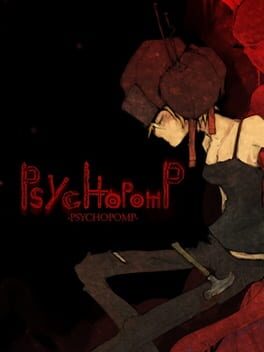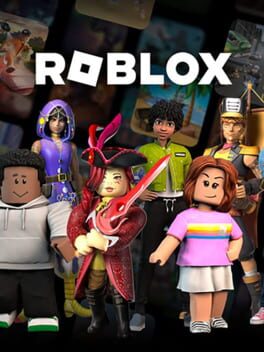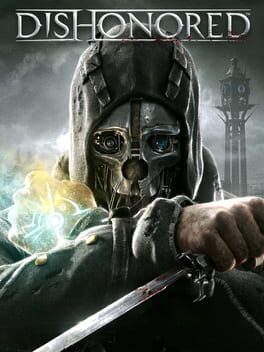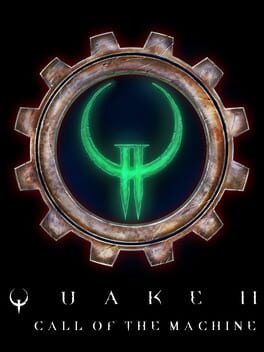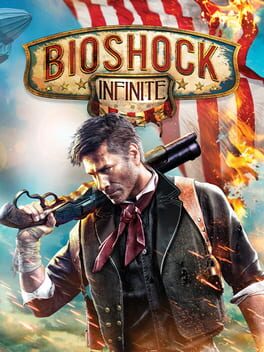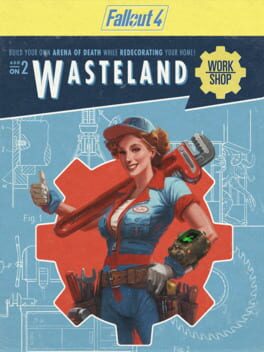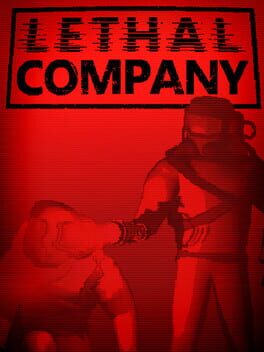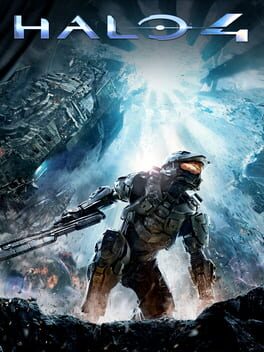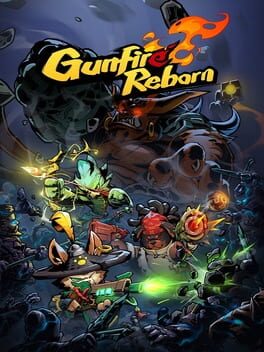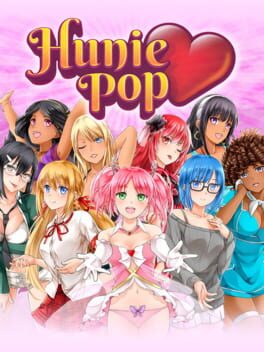2015
Decent game, weapon variety was cool though it felt like some weapons were weaker than others when they shouldn't be, especially the energy-based ones. Key hunting is mostly fun and the levels do a okay job at leading you in the right direction but becomes frustrating when the last key you need is hidden somewhere on a huge map. Besides that platforming and exploring the levels was fun, it's satisfying to find secret areas in this game if you explore a little bit. Enemy feedback is great, all the little animations just sell the damage you do to enemies (the mounted triceratops one is great). Kinda funny having to use the automap indicator as a DIY crosshair when I needed to snipe an enemy with the assault rifle.
1994
I was really impressed by what Marathon did with the early format of a FPS, it did things that really wouldn't be standard in video games until a few years after it released. When compared to DOOM which came out a year earlier, Marathon goes well beyond it in atmosphere and story.
Marathon's levels are really well structured, it balances feeling like an actual place on a space ship, while not being archaic enough to have you doing laps around every level. There's only a few levels I recall that had me confused on my objective, but it wasn't bad enough that I needed to look anything up outside the game. The dark lighting enhances the atmosphere the game has, enemies can get the jump on you, and at many points throughout the game they're scripted to ambush you. Adding onto the that, the music is very restrained and moody, it gives you the feeling of a dark abandoned ship, while having tracks that are higher energy for levels with more combat.
The puzzles in this game are hit or miss, I liked the interactivity of the assault rifle with switches, though the way some of them are structured feel more like tests of patience rather than something to solve. The rising platform puzzle later in the game had a simple enough concept, though I had to move columns several times since they can't be to high or low, and it takes at best a minute to travel between each switch, it could've been simplified in many ways.
What enhances the atmosphere and level design of the game is the story, which is told in a really unique way by relaying it through terminals, and there's enough depth and direction that it makes levels have more cohesion between each other, which DOOM really lacked, besides the change from space station to hellscape between episodes. You are given objectives, told to protect civilians, collect items, and this works really well.
The gameplay is pretty basic, though having free mouselook AND dual-wielding is insanely impressive for 1994! gunplay is basic as well, you have standard weapons like pistols, an assault rifle, an RPG, a plasma pistol and one more. It all works pretty well. The floaty gravity and movement makes it a bit difficult to circle-strafe, but I like it for selling the idea of a powerless space station that has some form of artificial gravity, makes long falls feel less dangerous when in that context.
I highly recommend playing this game, both for enjoying a game and getting a glimpse into the start of Bungie before Halo, as it's cool to see the loose connections between the two franchises. The game is abandonware now and a source port got put on Steam so it's never been easier to try it out.
Marathon's levels are really well structured, it balances feeling like an actual place on a space ship, while not being archaic enough to have you doing laps around every level. There's only a few levels I recall that had me confused on my objective, but it wasn't bad enough that I needed to look anything up outside the game. The dark lighting enhances the atmosphere the game has, enemies can get the jump on you, and at many points throughout the game they're scripted to ambush you. Adding onto the that, the music is very restrained and moody, it gives you the feeling of a dark abandoned ship, while having tracks that are higher energy for levels with more combat.
The puzzles in this game are hit or miss, I liked the interactivity of the assault rifle with switches, though the way some of them are structured feel more like tests of patience rather than something to solve. The rising platform puzzle later in the game had a simple enough concept, though I had to move columns several times since they can't be to high or low, and it takes at best a minute to travel between each switch, it could've been simplified in many ways.
What enhances the atmosphere and level design of the game is the story, which is told in a really unique way by relaying it through terminals, and there's enough depth and direction that it makes levels have more cohesion between each other, which DOOM really lacked, besides the change from space station to hellscape between episodes. You are given objectives, told to protect civilians, collect items, and this works really well.
The gameplay is pretty basic, though having free mouselook AND dual-wielding is insanely impressive for 1994! gunplay is basic as well, you have standard weapons like pistols, an assault rifle, an RPG, a plasma pistol and one more. It all works pretty well. The floaty gravity and movement makes it a bit difficult to circle-strafe, but I like it for selling the idea of a powerless space station that has some form of artificial gravity, makes long falls feel less dangerous when in that context.
I highly recommend playing this game, both for enjoying a game and getting a glimpse into the start of Bungie before Halo, as it's cool to see the loose connections between the two franchises. The game is abandonware now and a source port got put on Steam so it's never been easier to try it out.
Short and sweet point and click game, I really enjoyed it having grown up watching Homestar Runner but I think it's more than enjoyable for anyone who isn't familiar with the source material.
Puzzles didn't feel like cryptic bullshit which was a positive for me since I always get frustrated when point and clicks have puzzle solutions that are obfuscated. The game is designed around each episode being contained to one screen/room which I really enjoy! It makes experimenting and interacting much easier since you just have to work your way across a room. It's only 2 hours long so it didn't overstay its welcome. Really enjoyed the insane amount of dialogue the game has for every character and almost every interaction.
Puzzles didn't feel like cryptic bullshit which was a positive for me since I always get frustrated when point and clicks have puzzle solutions that are obfuscated. The game is designed around each episode being contained to one screen/room which I really enjoy! It makes experimenting and interacting much easier since you just have to work your way across a room. It's only 2 hours long so it didn't overstay its welcome. Really enjoyed the insane amount of dialogue the game has for every character and almost every interaction.
My main takeaway with this episode is that it feels and plays like it's just meant to bridge the gap between the main campaign and Episode 2, and greatly suffers from it.
I loved the art design of Infinite's main campaign, it's just a sight to behold on modern platforms and this expansion episode is no different. Rapture looks great in this game! Granted it's just using a preestablished setting but the contrast of going from Rapture before its downfall to the sunken Fontaine factories adds so much if you've already played Bioshock 1 and 2. Sadly, like the original campaign, I feel like the art direction is the strongest part while the combat suffers greatly.
Episode 1 places an emphasis on ammo and EVE management that the original campaign did not, though it doesn't push it enough to feel fair or fun in conjunction with the other mechanics this expansion offers. With ammo limited for 80% of the campaign the game tries to encourage you to seek creative solutions to take out splicers, the problem is that the game doesn't present you with many options much of the time. Stealth isn't viable since melee kills are very unreliable, and EVE is way too restrictive to be the difference between winning and losing a firefight. Tears never give many unique options that aren’t just a skyhook or an overpowered companion.
Another problem holding the combat back is with the weapon wheel, and even though having every weapon should let you be dynamic in combat, the way the weapon wheel works makes that feel impossible. In Bioshock 1 on KB+M you could use the number keys for swapping weapons and function keys for plasmids, it worked great! Going from plasmids to weapons let you have more control over fights. Episode 1 doesn't do that and it suffers for it.
When combat starts it shows just how weak the variety of playstyles is in this expansion especially. You get Old Man Winter which I never really used for the whole Episode, since it's basically just another plasmid that can stun, and it uses so much of your EVE that you're better off just using Devil's Kiss and Possession most of the time, since those at least provide a utility or can actually kill an enemy. If EVE costs for specific plasmids like Old Man Winter and Shock Jockey were paired back a bit I think it would’ve improved the combat drastically.
Tears are just as underwhelming as the base game, and I'd even say that they are either unimportant to combat or completely trivialize it. Sky hooks and ammo/health tears don't change much with combat, but spawning in companions completely destroys any challenge with an encounter. It's most egregious with the final boss, the Big Daddy, since you can just spawn a Motorized Patriot that aggros the Big Daddy, and you can kill the final boss without ever taking damage.
I didn't expect this expansion to be that long but it really doesn't have a long enough runtime to do anything interesting with the setting. I wasn't expecting a 10 hour campaign but I finished the episode in under 3 hours, and 30 minutes of that were spent in the beginning segment with no combat. If it was longer, you could’ve had more time to let the player build up their arsenal, since money is so scarce that you might have just enough for two upgrades by the end of the episode.
I thought the story was more intriguing than the base game since it felt more self contained, though it's obviously connected to how the base game ends, which I think hampers the storytelling if a player plays it not fully understanding what happened with all the multiverse shenanigans.
The ending boss like I mentioned above is really lame, I think if they fully committed to resource scarcity and dialed back the power of tears this could've been a really tense boss fight, give Old Man Winter more unique effect, and address the weapon switching. It's a shame to me since there's a lot of potential in the idea of a Bioshock game that has a heavy emphasis on resource scarcity, and leaning more into the lite-immersive sim elements the original had could've let this episode really shine. Let the player throw things, make stealth viable, let the player lean around corners, give tears more of a utility role rather than combat. Like the original campaign, it suffers from being indecisive, and I hope Episode 2 commits to a design and sticks to it.
I loved the art design of Infinite's main campaign, it's just a sight to behold on modern platforms and this expansion episode is no different. Rapture looks great in this game! Granted it's just using a preestablished setting but the contrast of going from Rapture before its downfall to the sunken Fontaine factories adds so much if you've already played Bioshock 1 and 2. Sadly, like the original campaign, I feel like the art direction is the strongest part while the combat suffers greatly.
Episode 1 places an emphasis on ammo and EVE management that the original campaign did not, though it doesn't push it enough to feel fair or fun in conjunction with the other mechanics this expansion offers. With ammo limited for 80% of the campaign the game tries to encourage you to seek creative solutions to take out splicers, the problem is that the game doesn't present you with many options much of the time. Stealth isn't viable since melee kills are very unreliable, and EVE is way too restrictive to be the difference between winning and losing a firefight. Tears never give many unique options that aren’t just a skyhook or an overpowered companion.
Another problem holding the combat back is with the weapon wheel, and even though having every weapon should let you be dynamic in combat, the way the weapon wheel works makes that feel impossible. In Bioshock 1 on KB+M you could use the number keys for swapping weapons and function keys for plasmids, it worked great! Going from plasmids to weapons let you have more control over fights. Episode 1 doesn't do that and it suffers for it.
When combat starts it shows just how weak the variety of playstyles is in this expansion especially. You get Old Man Winter which I never really used for the whole Episode, since it's basically just another plasmid that can stun, and it uses so much of your EVE that you're better off just using Devil's Kiss and Possession most of the time, since those at least provide a utility or can actually kill an enemy. If EVE costs for specific plasmids like Old Man Winter and Shock Jockey were paired back a bit I think it would’ve improved the combat drastically.
Tears are just as underwhelming as the base game, and I'd even say that they are either unimportant to combat or completely trivialize it. Sky hooks and ammo/health tears don't change much with combat, but spawning in companions completely destroys any challenge with an encounter. It's most egregious with the final boss, the Big Daddy, since you can just spawn a Motorized Patriot that aggros the Big Daddy, and you can kill the final boss without ever taking damage.
I didn't expect this expansion to be that long but it really doesn't have a long enough runtime to do anything interesting with the setting. I wasn't expecting a 10 hour campaign but I finished the episode in under 3 hours, and 30 minutes of that were spent in the beginning segment with no combat. If it was longer, you could’ve had more time to let the player build up their arsenal, since money is so scarce that you might have just enough for two upgrades by the end of the episode.
I thought the story was more intriguing than the base game since it felt more self contained, though it's obviously connected to how the base game ends, which I think hampers the storytelling if a player plays it not fully understanding what happened with all the multiverse shenanigans.
The ending boss like I mentioned above is really lame, I think if they fully committed to resource scarcity and dialed back the power of tears this could've been a really tense boss fight, give Old Man Winter more unique effect, and address the weapon switching. It's a shame to me since there's a lot of potential in the idea of a Bioshock game that has a heavy emphasis on resource scarcity, and leaning more into the lite-immersive sim elements the original had could've let this episode really shine. Let the player throw things, make stealth viable, let the player lean around corners, give tears more of a utility role rather than combat. Like the original campaign, it suffers from being indecisive, and I hope Episode 2 commits to a design and sticks to it.
2024
Really unique psychological horror game that uses a control scheme that reminds me of dungeon crawlers like SMT2. The design of everything from the HUD to the enemies really add to the mood of the game, everything feels off and a bit gross.
The controls are pretty restricting seemingly on purpose and I think it really adds to the tension of the game. You cant move and turn at the same time so your field of view and ability to observe your surroundings is much slower and limited, and I love it. There's some parts of the game that really take advantage of this method of movement and it really enhances what the game has to show. Game is pretty short but I think it's short runtime is a benefit since it ends just before you could start getting frustrated by some of the shortcomings.
Traversing the dungeons can be a pain since your movement speed is pretty slow and sprinting doesn't last long. There's lots of backtracking in each dungeon and there's one dungeon in particular where its easy to get lost. Another one of the dungeons is a bit of a slog due to precise movement required, and since there's no saves in dungeons you have to restart if you die. I'm fine with this since it adds tension to every combat encounter you have, but certain parts could be fairer towards the player considering you have to restart upon death.
Even if the game is a bit rough around the edges, I think this game will stick with me more than most because of how great the atmosphere is throughout the game. A highlight for me is the soundtrack, which is moody and a bit catchy, the closest I can compare it to is PSX or Dreamcast game OSTs, it's really great. I highly recommend trying this game since it has a great sense of atmosphere and uses movement in a way that enhances the horror aspect of the game. Not to mention it's FREE! No excuse to at least try it.
The controls are pretty restricting seemingly on purpose and I think it really adds to the tension of the game. You cant move and turn at the same time so your field of view and ability to observe your surroundings is much slower and limited, and I love it. There's some parts of the game that really take advantage of this method of movement and it really enhances what the game has to show. Game is pretty short but I think it's short runtime is a benefit since it ends just before you could start getting frustrated by some of the shortcomings.
Traversing the dungeons can be a pain since your movement speed is pretty slow and sprinting doesn't last long. There's lots of backtracking in each dungeon and there's one dungeon in particular where its easy to get lost. Another one of the dungeons is a bit of a slog due to precise movement required, and since there's no saves in dungeons you have to restart if you die. I'm fine with this since it adds tension to every combat encounter you have, but certain parts could be fairer towards the player considering you have to restart upon death.
Even if the game is a bit rough around the edges, I think this game will stick with me more than most because of how great the atmosphere is throughout the game. A highlight for me is the soundtrack, which is moody and a bit catchy, the closest I can compare it to is PSX or Dreamcast game OSTs, it's really great. I highly recommend trying this game since it has a great sense of atmosphere and uses movement in a way that enhances the horror aspect of the game. Not to mention it's FREE! No excuse to at least try it.
2006
Can't really give this a rating given the nature of how Roblox works. I played from around 2009-2014 and started playing again more recently with friends. Games made on Roblox now are SO much more polished than what was being made even a decade ago, though I feel like some of the charm of Roblox a decade ago and earlier was lost with the insane surge of growth Roblox has had.
Game dev tools weren't as accessible to the average person from 2007-2012 so it gave lots of younger people experience in game design and Lua! I don't know if they encourage learning Lua programming like they did back then but it was a great gateway to me to learn computer programming when I got older.
From what I've seen there's whole game studios dedicated to making games on Roblox, which is crazy to see in contrast to the solo projects made years ago. Though from what I've read Roblox's monetization system is heavily skewed towards giving the Roblox corporation the majority of the revenue brought in. With some of the new talent getting their start on Roblox and leaving the platform to develop without the restrictions of Roblox (Unturned, Lethal Company), it seems like Roblox should pay the devs who MAKE the games for their platform better, or risk losing more and more creative people. It's so much easier now to set up your own itch.io storefront and get a guaranteed better cut that aspiring creatives will gravitate towards, why wouldn't they choose that option now?
I think the platform itself still has an infinite number of fun games to play, though as can be seen my issues stem with how the platform is run rather than the games themselves. It's completely free so it's worth at least checking it out to understand why the game is HUGE now.
Game dev tools weren't as accessible to the average person from 2007-2012 so it gave lots of younger people experience in game design and Lua! I don't know if they encourage learning Lua programming like they did back then but it was a great gateway to me to learn computer programming when I got older.
From what I've seen there's whole game studios dedicated to making games on Roblox, which is crazy to see in contrast to the solo projects made years ago. Though from what I've read Roblox's monetization system is heavily skewed towards giving the Roblox corporation the majority of the revenue brought in. With some of the new talent getting their start on Roblox and leaving the platform to develop without the restrictions of Roblox (Unturned, Lethal Company), it seems like Roblox should pay the devs who MAKE the games for their platform better, or risk losing more and more creative people. It's so much easier now to set up your own itch.io storefront and get a guaranteed better cut that aspiring creatives will gravitate towards, why wouldn't they choose that option now?
I think the platform itself still has an infinite number of fun games to play, though as can be seen my issues stem with how the platform is run rather than the games themselves. It's completely free so it's worth at least checking it out to understand why the game is HUGE now.
2012
I think what gives Dishonored its quality is its length, where it's short enough to not be boring during replays, while being long enough to let you gradually build up your arsenal. Stealth is really fun using all of the powers given to you, and the game is flexible enough to let you do some wild takedowns or kills. The chaos system is pretty forgiving in letting you have a mix of both lethal kills and non-lethal takedowns, though the game is fun enough that it's just as engaging going fully lethal or non-lethal. The weakest part of the game for me was the last 3 missions, since they can be a bit of a slog, and their endings feel very anticlimactic whether you go low or high chaos. For a game that involves the dirty side of politics and government, it was disappointing that the story itself was just okay. The game feels like it's missing that escalation you'd expect considering what happens near the end of the game (no spoilers). Despite my issue with the story I highly recommend doing at least one playthrough to see if you'd want to invest time challenging yourself with non-lethal or ghost challenges.
Shockingly good expansion that is on par with the quality of the original Quake II campaign. The levels all have unique designs to them, for a large expansion like this it helps keep you engaged since you'll just keep seeing new stuff every level you enter. The updated lighting of the KEX Engine really shines since the levels make use of techniques the original engine probably couldn't do. Enemy encounters are really frantic and fun, very creative in how they use encounters to either make you feel vulnerable or powerful when you use the powerup you've been storing. The weakest part of the expansion is the bosses, since the final boss fight especially is really frustrating due to lack of cover and lots of enemies spawning in.
2013
I liked the art design but didn't like much else in this game.
The art design of Columbia is great! Completely different from Bioshock 1 & 2 but it's very unique and holds up over a decade later. That's probably the only aspect of this game I really liked without complaints.
The gameplay is nothing like the previous Bioshock games, it can be described as an arena shooter in the same vein as Doom Eternal in terms of its combat, where It emphasizes movement and long distance combat in an enclosed space. I think it can be good on paper, but the elements that make up the combat drag down the whole system.
Combat feels like it doesn't take advantage of the new vigor system enough due to arenas being HUGE now. Medium and long range combat is much safer and reliable than getting up close with vigors and close range weapons like the shotgun or crank gun. Even when indoors it feels like you really don't have any defensive options besides cover until you get Return to Sender, which you only get in the 2nd half of the game. Build variety could've been really cool to encourage but since you're limited to only two weapons it's a huge risk to take something like the shotgun over the carbine.
While Bioshock 1 and Infinite have completely different designs, in 1 you had flexibility in what you specialize in; you could focus on shock + melee, or misdirect enemies with enrage or target dummy, etc, and there were enough weapon upgrade stations to drastically improve weapons you enjoy using. Infinite lets you upgrade weapons and vigors using a universal currency, which could've worked best in a game that prioritized resource management, which Infinite is definitely not. You end up with less opportunities for upgrades to both vigors and weapons unless you solely focus on one category. Gear in Infinite is a great example of the problems with simplifying the tonic system 1 had. It's harder to justify running a niche gear modifier when you only have 4 slots compared to the 18 you got in 1.
Skyhooks would seem like a good addition since they let you enhance your mobility and give you a new way to attack enemies, but how they function and their quirks really drag them down. Shooting while riding a skyline feels unviable since you just jerked around when you aren't at a full stop, though it was fun doing quick attacks using the volley gun or the RPG. Quick use of the skylines or freighthooks feels impossible since the camera will try to center(?) before you can freelook, which makes doing quick traversal or skyline strikes a pain.
The tear system is kinda cool but it feels like it doesn't add that much to the combat, since the most you can hope for is some cover or a new weapon when ammo runs low. Spawning companions is interesting since they have a more meaningful change to combat, taking some of the pressure off temporarily. Overall it doesn't do much to make combat more dynamic.
When you do use vigors it feels like their uses overlap, since crows, shock, and bucking bronco are all just different ways of damaging and stunning enemies. Patriots and handymen show how limiting the vigor system is since the only two vigors worth using on them is possession or shock jockey.
The enemies you have to fight with this combat system don't do it many favors as well. Enemy variety is pretty lacking, with only really 3 types of basic enemies you'll be fighting for most the game, and 2 of those you'll only see very rarely. Patriots are a pushover since you can just spam shock jockey and get behind them, handymen are similar since if you don't shock stun them you'll have to deal with the screenshake they induce that makes it impossible to aim (Why is there no option to disable combat screenshake?).
Generally I just didn't like the combat, it's elements either didn't mesh well together or made combat feel bad.
Story is just alright, it's a multiverse story before they became popular so it's not impossible to understand but they don't do the best job at explaining the rules of this world. Nothing remarkable really.
I wouldn't recommend this game unless you REALLY liked Bioshock 1 & 2 and are OK with it being a completely different take on the Bioshock design, flaws and all.
The art design of Columbia is great! Completely different from Bioshock 1 & 2 but it's very unique and holds up over a decade later. That's probably the only aspect of this game I really liked without complaints.
The gameplay is nothing like the previous Bioshock games, it can be described as an arena shooter in the same vein as Doom Eternal in terms of its combat, where It emphasizes movement and long distance combat in an enclosed space. I think it can be good on paper, but the elements that make up the combat drag down the whole system.
Combat feels like it doesn't take advantage of the new vigor system enough due to arenas being HUGE now. Medium and long range combat is much safer and reliable than getting up close with vigors and close range weapons like the shotgun or crank gun. Even when indoors it feels like you really don't have any defensive options besides cover until you get Return to Sender, which you only get in the 2nd half of the game. Build variety could've been really cool to encourage but since you're limited to only two weapons it's a huge risk to take something like the shotgun over the carbine.
While Bioshock 1 and Infinite have completely different designs, in 1 you had flexibility in what you specialize in; you could focus on shock + melee, or misdirect enemies with enrage or target dummy, etc, and there were enough weapon upgrade stations to drastically improve weapons you enjoy using. Infinite lets you upgrade weapons and vigors using a universal currency, which could've worked best in a game that prioritized resource management, which Infinite is definitely not. You end up with less opportunities for upgrades to both vigors and weapons unless you solely focus on one category. Gear in Infinite is a great example of the problems with simplifying the tonic system 1 had. It's harder to justify running a niche gear modifier when you only have 4 slots compared to the 18 you got in 1.
Skyhooks would seem like a good addition since they let you enhance your mobility and give you a new way to attack enemies, but how they function and their quirks really drag them down. Shooting while riding a skyline feels unviable since you just jerked around when you aren't at a full stop, though it was fun doing quick attacks using the volley gun or the RPG. Quick use of the skylines or freighthooks feels impossible since the camera will try to center(?) before you can freelook, which makes doing quick traversal or skyline strikes a pain.
The tear system is kinda cool but it feels like it doesn't add that much to the combat, since the most you can hope for is some cover or a new weapon when ammo runs low. Spawning companions is interesting since they have a more meaningful change to combat, taking some of the pressure off temporarily. Overall it doesn't do much to make combat more dynamic.
When you do use vigors it feels like their uses overlap, since crows, shock, and bucking bronco are all just different ways of damaging and stunning enemies. Patriots and handymen show how limiting the vigor system is since the only two vigors worth using on them is possession or shock jockey.
The enemies you have to fight with this combat system don't do it many favors as well. Enemy variety is pretty lacking, with only really 3 types of basic enemies you'll be fighting for most the game, and 2 of those you'll only see very rarely. Patriots are a pushover since you can just spam shock jockey and get behind them, handymen are similar since if you don't shock stun them you'll have to deal with the screenshake they induce that makes it impossible to aim (Why is there no option to disable combat screenshake?).
Generally I just didn't like the combat, it's elements either didn't mesh well together or made combat feel bad.
Story is just alright, it's a multiverse story before they became popular so it's not impossible to understand but they don't do the best job at explaining the rules of this world. Nothing remarkable really.
I wouldn't recommend this game unless you REALLY liked Bioshock 1 & 2 and are OK with it being a completely different take on the Bioshock design, flaws and all.
Janky mess of an add-on, never even got it to work since the building system in FO4 is so finicky to begin with. Cool concept to let you recreate NPC fights like you can do in Garry's Mod but the reality from what I've seen is that it's so much more restricting. Don't bother even if you like the building system in FO4.
2023
Goes to show how good integration of online features can make a game really enthralling. Locational VoIP makes this game as fun as it is with friends, and while the game isn't complete at the time of writing, what's there lets the player get immersed into the game. It can be funny AND horrifying, it's great.
2017
Unique, short horror game with amazing art design in regards to the world as well as its disgusting enemies. It's fairly simple gameplay-wise, I figured there would be more puzzles but the most you'll have to do is avoid enemies or unlock a door with a key. A few of the encounters that involved avoiding or escaping enemies were very frustrating as their hitboxes feel really unforgiving. I started to get bored halfway through the game but the diverse locations and monster designs kept me hooked in spite of the repetition. I'd say to watch a trailer and/or early gameplay to see if the artstyle interests you since that's the main draw of this game in my opinion.
2012
Ultimately Halo 4 just feels aimless, there's cool ideas sprinkled throughout the campaign but they're often overshadowed by boring levels or a story that convoluted itself with new characters that drag down what could've been a cool dynamic with Cortana experiencing Rampancy, but they don't really do that much with it sadly. Combat feels very different from Halo 1-3, you have much less ammo in reserves and enemies are much more defensive, teleporting behind cover and regaining their shields, its just very frustrating if played solo, this problem felt less pronounced when playing the campaign in co-op . Vehicles feel useless in many cases because of how small arenas are, and enemies use charged plasma shots SO much so you'll just end up getting sent into a ravine or killed. The art design is really desaturated too, readability of enemy ranks using their armor color is basically impossible in a firefight. I don't recommend this game to anyone except Halo fans who want to play all of the games just out of curiosity.
2020
Really fun rougelite FPS to play with friends, though when playing solo some of the issues of this game get laid bare. Scrolls can be a bit boring in how they boost your abilities, mostly just being stat boosts you get outright or if you do something simple. Ascensions are pretty simple too, but their boosts are often large enough to see the difference in cooldown, damage, or your other stats. I've liked playing all of the characters the game offers so far, their unique abilities end up having you play very differently and focus on different weapon types per character. Bosses are OK, most are simple fights where you can learn their attacks, while others have a gimmick to their fights, and one is a DPS CHECK (this alone has killed so many of my runs).
Now that the game is out of Early Access there's so much more to do compared to when I started playing years ago. The new Spiritual Assault gamemode is really fun, and there's more bosses and paths to take. If you are willing to learn common synergies and have a group to play it with. It's very hard the further you get into a run, and it can feel frustrating when you get one-tapped by an attack that just barely clipped you, which is why I say that the game feels less frustrating when played as a group.
Now that the game is out of Early Access there's so much more to do compared to when I started playing years ago. The new Spiritual Assault gamemode is really fun, and there's more bosses and paths to take. If you are willing to learn common synergies and have a group to play it with. It's very hard the further you get into a run, and it can feel frustrating when you get one-tapped by an attack that just barely clipped you, which is why I say that the game feels less frustrating when played as a group.
2015
